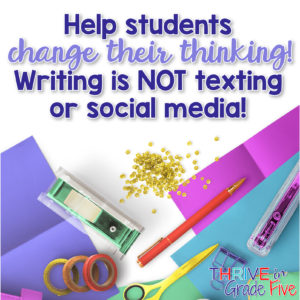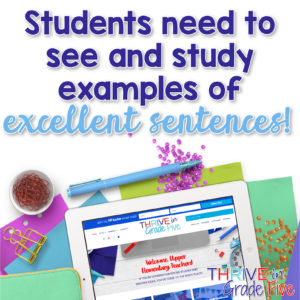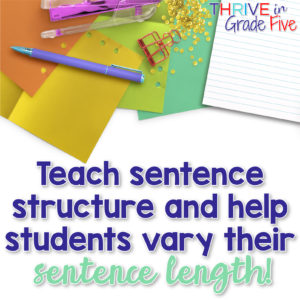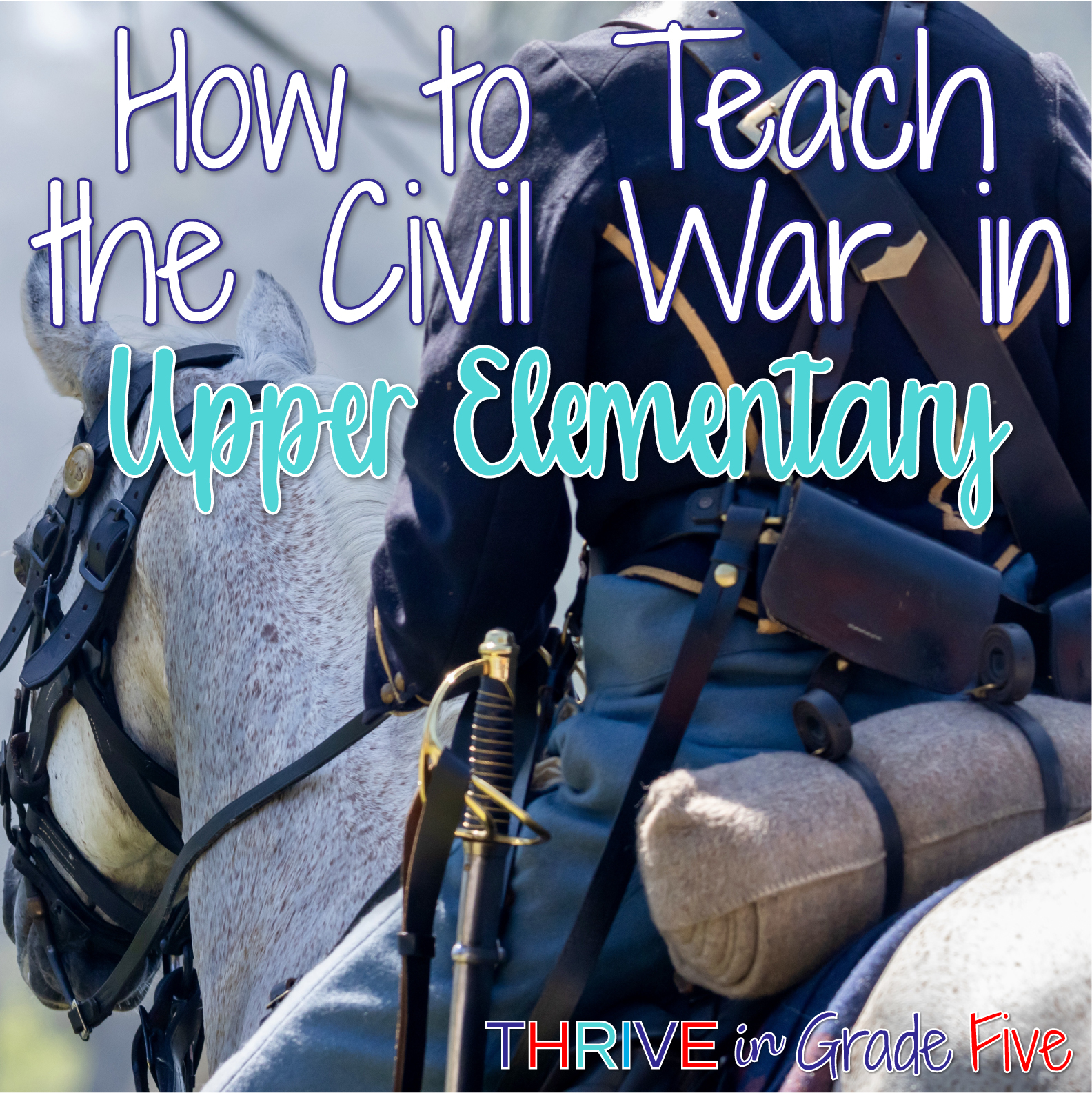Would you like to help your students write better sentences?
If you’ve been frustrated with the quality of your students’ sentences, this blog post is for you!
Writing sentences is just one aspect of teaching 5th grade writing. Hop over to this post if you’d like to find out How I Teach 5th Grade Writing!

Help students change their thinking! Writing is NOT texting or social media!
OMG, what up, LOL – Our students have certainly developed habits when it comes to expressing themselves.
Texting and social media have a place in our everyday lives but students need to understand the difference between formal writing and the “writing” we do when communicating with friends and family on technology outlets.
Writing should be considered formal communication.
When we communicate formally, there is no place for slang, shortcuts, or informal language.
I remind my students that their readers usually cannot hear their voices or see their facial expressions when reading their written compositions, so they must make every effort to communicate clearly and in an interesting way.
Just a quick note before we go on… If you’d like to join my VIP upper elementary teacher email club, it’s free! You’ll receive weekly tips, resources, and fun in your inbox. No spam – promise!

Students need to see and study examples of excellent sentences!
When I was a brand new teacher, I was frustrated with my students’ poor sentences.
“This is not a complete thought. I don’t know what you are trying to say here.”
I would say these things all.the.time.
Later, luckily, it dawned on me that I was expecting students to write amazing sentences, and later Five Paragraph Essays, without showing them great examples first.
How obvious, right?!?
My students’ writing skills improved tremendously when I began to show them multiple excellent examples of writing before asking them to compose on their own.

Teach sentence structure and help students vary their sentence length!
Our students need to have a firm grasp on sentence structure.
First, I lead students in a review of complete sentences.
They need to understand the parts of a complete sentence because they’ve probably been using fragments, phrases, and incomplete sentences in their texting/social media lives.
Eventually, writing complete sentences becomes an internalized process, but first, we must teach, practice, and reinforce the writing of complete sentences.
I keep this simple: We look for subjects and predicates in example sentences. We also discuss appropriate punctuation and capitalization.
We revise sentences that are missing a subject, predicate, capitalization, or punctuation.
Once students are pros at writing complete sentences, we work on expanding simple sentences into compound sentences and adding dependent clauses.
Examples
Simple Sentence: Marley went to the park.
Compound Sentence: Marley went to the park, but she decided to go home early.
Sentence with Dependent Clause: Because there was a large dog loose at the park, Marley decided to go home early. (Dependent clause is bold)
It’s important to explain to students that all sentence types should be used in our writing. If we use ALL simple sentences, our readers will become bored. If we use ALL complex/longer sentences, our readers will become overwhelmed. We need to VARY our sentence length to keep readers interested.

Vivid language makes a difference!
When writers use vivid language, they paint a picture in their readers’ minds.
Vivid language helps readers to feel more connected to the text.
I use the following example with my students.
Original text: My neighbor rode her bike away from the dog.
Question: Does the sentence above paint a picture in your mind?
Probably not… It’s quite general and maybe a little boring.
Text with vivid language: I looked up from my tree swing to see my sweaty, terrified 8-year-old neighbor pedaling her bike away from the yappy chihuahua that was chasing her down the block.
Question: Does the sentence above paint a picture in your mind?
It sure does! Can you see the girl desperately pedaling her bike while being chased by the little chihuahua?
#vividlanguagematters
Let’s wave goodbye to boring words!
As we all know, some word choices are better than others.
Words like talk, walk, and said are boring.
I tell my students that they can absolutely use boring words in their writing BUT they shouldn’t use them over and over.
For example, if they find that they are using the word said multiple times in their writing, they should find a better, more interesting word.
Original: Paul said he didn’t want to go to the party.
Improved Text: Paul let out a small whimper and whispered, “I don’t want to go to the party.”
That second sentence is so much more interesting than the first, right?!?
To help my students remember to cut boring words out of their writing, I create this display every year.
The hands belong to my students. They really get into creating their handprints with construction paper 🙂

Near the Wave Goodbye to Boring Words display, I create a Sparkle Words display.
Sparkle Words are special words that take your students’ sentences from dull to dazzling.
Our Sparkle Words include mostly adjectives and adverbs. Check out the display below:

My students create gems and diamond rings out of construction paper. We even jazz up the display with peel and stick gem stickers.
As students read on their own and progress throughout the year, they often come across sparkle words that they want to add to the display.
I allow and encourage this! Students find it motivating to add words to the sparkle board.
I also have them keep their own list of sparkle words in their Writing Interactive Notebooks.

Great readers are usually great writers!
Where do students find sparkle words and how do they internalize sentence structure and learn new ways to say things? By reading widely!
I encourage frequent reading for my budding writers. I firmly believe that it’s not possible to be a great writer if you aren’t reading the work of other people often.
Don’t create your own Sentence Improvement materials for students! This mini-unit is ready-to-use! To view my Sentence Improvement Mini-Unit, click on the image below:









